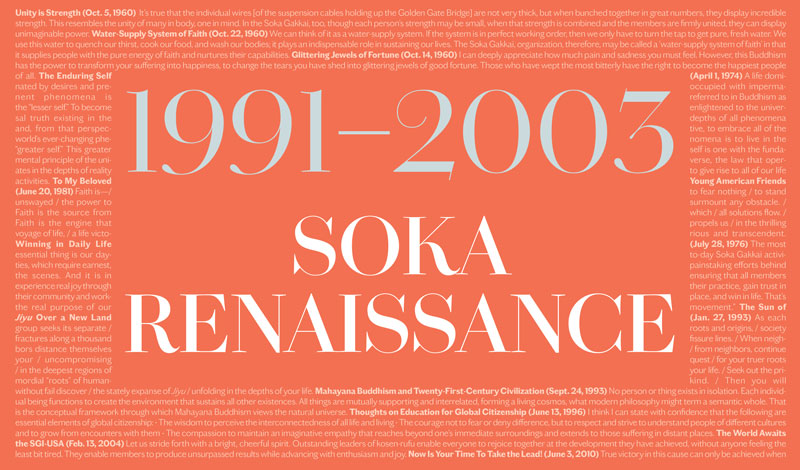To see the actual timeline please click here.
The end of the Cold War saw nations celebrating windfall “peace dividends,” slashed and repurposed military spending to fund education, sanitation, health care and the like. With the fall of the Berlin Wall, symbol of Cold War division, the icy walls dividing the great powers and their allies, too, began to crumble. For the Soka Gakkai, it was likewise a time of transition and growth as a global movement.
Threatened by the lay organization’s dynamic growth under Ikeda Sensei’s leadership, the Nichiren Shoshu priesthood drew increasingly from its few sources of power: authoritarianism, dogmatism and intimidation.
On Nov. 28, 1991, high priest Nikken Abe summarily expelled the Soka Gakkai’s 10 million members, the largest wholesale religious excommunication in history. Intending to sever the bonds of mentor and disciple, this egregious act strengthened them instead. The vast majority of members worldwide remained with the Soka Gakkai under Sensei’s leadership and today celebrate Nov. 28 as Spiritual Independence Day, marking the liberation of the movement for kosen-rufu from the shackles of a corrupt and ossified priesthood. The Soka Gakkai named the following year the Year of Soka Renaissance, signifying its emergence as a global religion unfettered by dogmatic constraints.
Following the split, Sensei began a series of discussions and study lectures conveying the essentials of faith. The first of the series, now published as The Wisdom of the Lotus Sutra, reveals the pulsing heart of Nichiren Buddhism, a humanism committed to the empowerment of all. Following this series, Sensei completed numerous works, including The Heart of the Lotus Sutra and The World of Nichiren Daishonin’s Writings, discussing the lineage of Buddhism from Shakyamuni’s Lotus Sutra to Nichiren Daishonin’s Buddhism of the people to the Soka Gakkai’s religious movement of human revolution. The study of these materials has powered the progress of our kosen-rufu movement worldwide.
Between 1991 and 1996, Sensei visited the United States five times, driving ever deeper the pilings of construction. He directed the attention of SGI-USA’s leadership away from the large, frequent festivals that characterized its early years to steady, everyday efforts: solidifying the basics of faith, winning in daily life and creating harmonious families.
At the start of the new century, on May 3, 2001, SGI members celebrated the beginning of the second series of Seven Bells with the establishment of Soka University of America, a nonsectarian four-year liberal arts undergraduate school founded by Sensei and dedicated to Soka education.
The need for a university grounded in the Buddhist principles of peace, human rights and the sanctity of life was tragically underscored a month after classes began, when the Sept. 11 terrorist attacks shocked the nation. At a headquarters leaders meeting held several days before the attacks and attended by 41 SGI-USA youth representatives in Tokyo, Sensei called for fostering global citizens, “people who are more than merely Japanese, or American or any other nationality.” He continued, “We must extend the network of global citizens who possess both a positive philosophy and true capability, and who are dedicated to joining hands with all people on this planet and advancing with them” (Oct. 21, 2001, World Tribune, p. 7). In 2003, Sensei named the day of this meeting, Sept. 5, as SGI-USA Youth Division Day.
With a profound sense of mission, SGI-USA youth turned their attention to sharing Buddhism for the sake of peace, marking the first expansion campaigns led by a new generation of youth united with their mentor’s heart.
September 1991, 1993
Two Harvard Lectures
Ikeda Sensei presented the first of two Harvard University lectures on Sept. 26, 1991, at the John F. Kennedy School of Government. Titled “The Age of Soft Power,” it set forth the urgent need to usher in such an age and the tenets that make its realization possible. “I propose that self-motivation is what will open the way to the era of soft power. While systems depending on hard power have succeeded by using established tools of coercion to move people toward certain goals, the success of soft power is based on volition. It is an internally generated energy of will created through consensus and understanding among people. The processes of soft power unleash the inner energies of the individual” (My Dear Friends in America, fourth edition, pp. 126–27).
Two years later, he presented his second lecture there, titled “Mahayana Buddhism and Twenty-First-Century Civilization.”
Dec. 25, 1991

The Cold War ends as Soviet Union President Mikhail Gorbachev resigns and the Soviet Union dissolves. Two years earlier, the Berlin Wall, an iconic symbol of Cold War division, fell.
Nov. 28, 1991
Spiritual Independence
On Nov. 28, 1991, the Nichiren Shoshu priesthood, led by high priest Nikken Abe, excommunicated over 10 million lay practitioners of the SGI. Steeped in centuries of feudalistic tradition and hierarchy, the priests could not come to terms with the self-reliant, forward-thinking membership. The threat of excommunication was their last desperate attempt to seize control of the laity and their resources.
Recognizing the priesthood’s corruption and distorted teachings, the vast majority of members worldwide chose to continue practicing within the SGI under Ikeda Sensei’s leadership.
The SGI’s departure from the authoritarian Nichiren Shoshu priesthood allowed Nichiren Buddhism to blossom as a world religion—one that upholds the sanctity of life and human dignity. As a result, the movement began developing at an unprecedented pace, expanding from 115 to 192 countries and territories.
SGI members worldwide now celebrate Nov. 28 as Spiritual Independence Day.
1990s
A Deepening of Buddhist Study
Following the SGI’s spiritual independence, Ikeda Sensei published several Buddhist study series including The Heart of the Lotus Sutra, The Wisdom of the Lotus Sutra and The World of Nichiren Daishonin’s Writings, exploring the depth and profundity of Buddhism. His efforts continued with his lectures on Nichiren Daishonin’s writings, serialized monthly in the Soka Gakkai’s study journal, Daibyakurenge, and published as The Teachings for Victory and “The Buddhism of the Sun—Illuminating the World” series.
Returning to the Essence
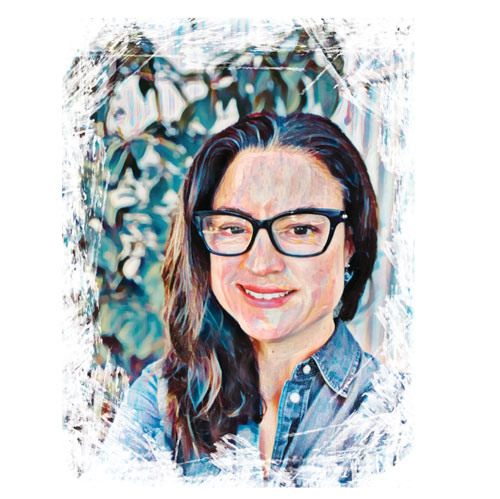
by Wendy Desouza
Sebastopol, Calif.
The ’90s were a time of returning to the essence of faith after the priesthood issue and reestablishing the mentor and disciple relationship with Ikeda Sensei.
When I was appointed the SGI-USA young women’s leader in 2000, I remember asking myself: What would our lives, the SGI-USA and society look like if we really practiced with the same heart as Sensei?
As youth division, we used Seize the Day, the SGI-USA youth publication with the World Tribune, to unite and discuss—even argue—about questions around mentor and disciple and the priesthood issue. In retrospect, this was us trying to clarify its essence.
Sensei continued to shine a light on America. During a headquarters leaders meeting in Japan on Sept. 5, 2001, we presented the SGI-USA youth flag to Sensei. When our youth leader at the time, James Herrmann, presented it to Sensei, I felt all of us saw themselves on that stage.
Shortly after, on our flight home to the U.S., 9/11 happened. Each of us felt that Sensei prepared us for that moment, and to share Buddhism with greater resolve for peace.
Many incredible youth exchanges with Sensei followed. Whether it was a fist-bump with Sensei or a Q&A session where we could ask anything on our minds, we just felt this tremendous care from him. And we determined to respond to this care by bringing this spirit back to our members in America.
This time with Sensei and the renewal of SGI-USA taught me how to create unity by fighting my own ego and basing my life on my vow with my mentor. Every day, I ask myself what I am going to do today for kosen-rufu. With my family, as a college professor and in my community, I strive to appreciate and believe in each person, never forgetting the great expectations Sensei has for America.
April 29, 1992
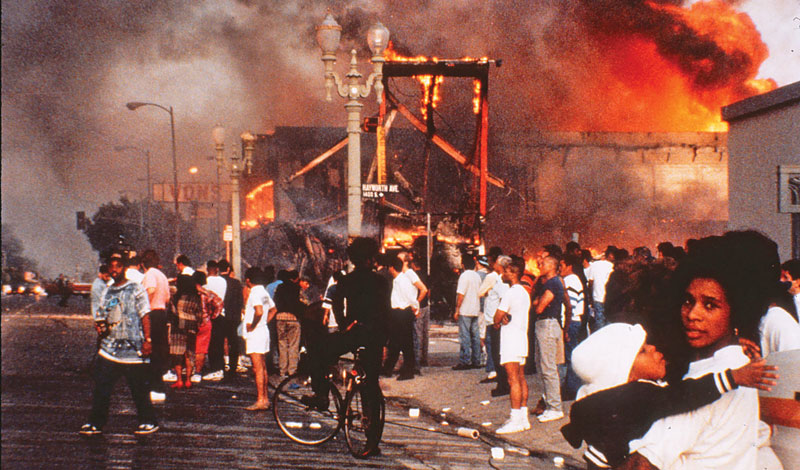
Four Los Angeles police officers are acquitted of the beating of Rodney King, a Black man they had pulled over for a traffic violation. Fury over the acquittal resulted in five days of social unrest in Los Angeles and sparked a national debate about police brutality, racial discrimination and economic inequality.
Jan–March 1993
‘The Sun of Jiyu Over a New Land’
On his 24th visit to the SGI-USA, Ikeda Sensei presented the poem “The Sun of Jiyu Over a New Land” at the Second SGI-USA General Meeting on Jan. 27, 1993. In it, Sensei recalls the heartrending images of the 1992 civil unrest in Los Angeles that had raced around the world following the Rodney King verdict. He writes of the solution to the increasing division in society—to “break the hard shell of the lesser self” and return to humanity’s essence, transcending all superficial differences and helping others awaken to the life state of jiyu within.
June 11, 1993

A biographical film of American singer-songwriter and Buddhist Tina Turner, What’s Love Got to Do With It, is released. It follows the story of her rise to stardom and how, through her Buddhist practice of chanting Nam-myoho-renge-kyo, she gained the courage to break free from her abusive husband. It has since introduced countless individuals to Nam-myoho-renge-kyo.
June 8, 1996
Columbia University Lecture
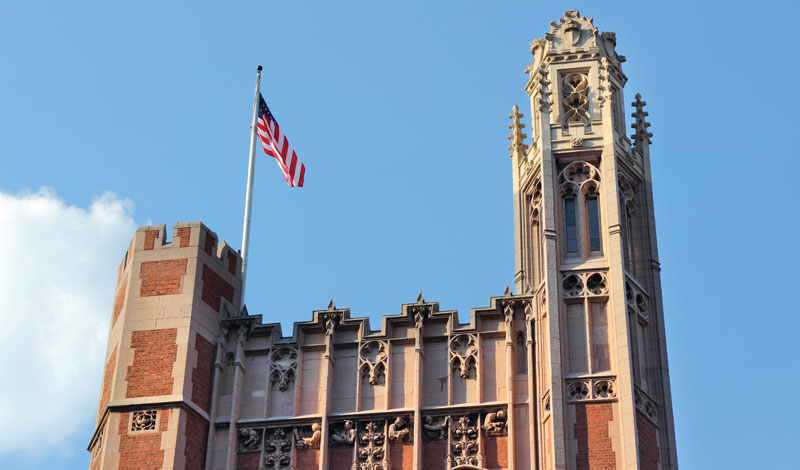
In New York, on his 27th and final visit to the United States, Sensei spoke at Columbia University’s Teachers College, presenting the enduring lecture “Thoughts on Education for Global Citizenship,” in which he outlined the essential elements of global citizenship: “The wisdom to perceive the interconnectedness of all life and living; the courage not to fear or deny difference, but to respect and strive to understand people of different cultures and to grow from encounters with them; and the compassion to maintain an imaginative empathy that reaches beyond one’s immediate surroundings and extends to those suffering in distant places” (My Dear Friends in America, fourth edition, p. 450).
June 19, 1996
A Spiritual Treasure From our Mentor: FNCC Opens
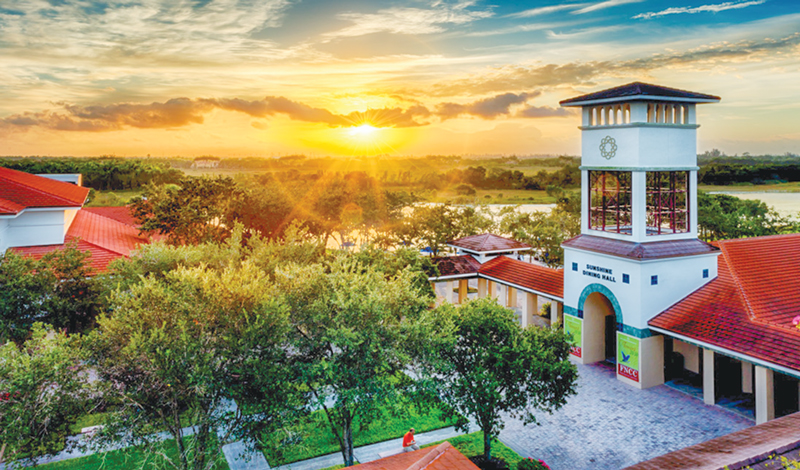
Ikeda Sensei traveled to Florida to celebrate the opening of the SGI-USA Florida Nature and Culture Center (FNCC) with members from throughout the country. Nestled on 125 acres of restored wetlands in Weston, Florida, it continues to serve as a spiritual oasis for members to seek their mentor’s heart for kosen-rufu and deepen their faith.
On June 23, Sensei led the 21st SGI General Meeting held at the FNCC Friendship Auditorium with members from 52 countries and territories. His speech, “Pioneer a Leadership Revolution,” touched on the six conditions for happiness as: fulfillment, possessing a profound philosophy, conviction, living cheerfully and vibrantly, courage and tolerance (see My Dear Friends in America, fourth edition, pp. 476–87).
He spent several days on the FNCC grounds, freely interacting with SGI members from around the world.
21st Century
Second Set of Seven Bells
The Seven Bells are series of seven seven-year periods outlining targets for the Soka Gakkai’s development, based on second Soka Gakkai President Josei Toda’s determination that the organization “sound a bell every seven years to mark our progress toward kosen-rufu.” Ikeda Sensei, then-youth division chief of staff, first proposed the idea on May 3, 1958, a month after Mr. Toda’s April 2 passing. The first series of Seven Bells started with the organization’s founding in 1930 and ended in 1979. On May 3, 1966, Sensei spoke of a new series of Seven Bells that he envisaged unfolding in the 21st century.
May 3, 2001, signaled the start of the second set of Seven Bells spanning the years until 2050, with the vision of consolidating the groundwork for peace in Asia and the world. Together with the third set of Seven Bells to follow, it represents the establishment of respect for the dignity of life as the underlying spirit of the age.
May 3, 2001
Soka University of America Opens
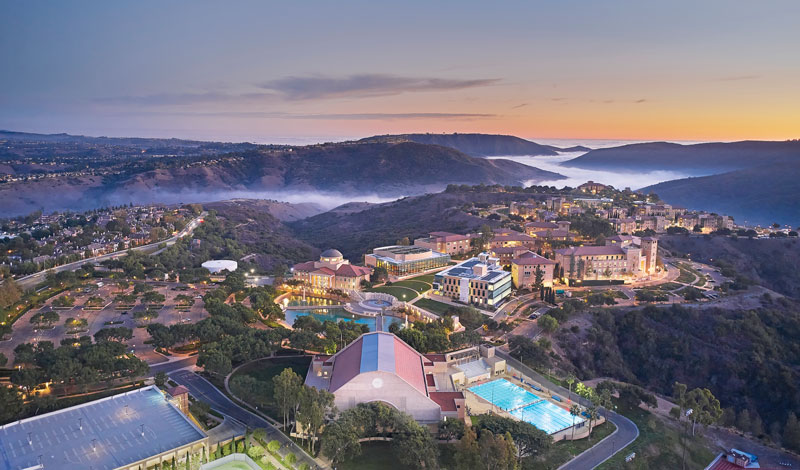
Soka University of America opened on May 3, 2001, in Aliso Viejo, Calif., as a four-year, nonsectarian undergraduate liberal arts school with the mission to “foster a steady stream of global citizens committed to living a contributive life.” That year, the first liberal arts college to be built in California in two decades welcomed its first class of 120 students from 18 countries and 18 U.S. states.
Sept. 5, 2001
SGI-USA Youth Division Flag Presented to Sensei
On Sept. 5, 2001, 41 SGI-USA youth representatives attended a headquarters leaders meeting held in Tokyo. There, Ikeda Sensei called for fostering global citizens, saying in part, “We must extend the network of global citizens who possess both a positive philosophy and true capability, and who are dedicated to joining hands with all people on this planet and advancing with them” (Oct. 12, 2001, World Tribune, p. 7). With a vow to fight alongside Sensei, the representatives presented the SGI-USA Youth Division Flag.
On their return flight home, their plane was diverted to Canada due to the Sept. 11 attacks. Sensei named the youth the “Ever-Victorious Group,” instilling them with a sense of mission to remain undefeated as they advanced kosen-rufu in America.
Led by youth, the SGI-USA ignited the spirit of shakubuku as the means to transform the land. Two years later, Sensei established Sept. 5 as SGI-USA Youth Day—a day on which youth renew their vow to advance kosen-rufu, with and for their mentor.
Sept. 11, 2001
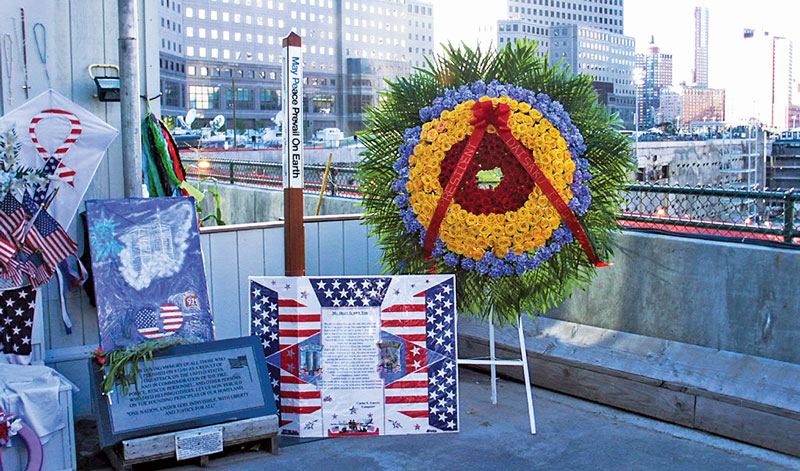
Terrorists hijacked four commercial airliners, crashing two planes into the World Trade Center in New York, one into the Pentagon in Virginia and a fourth in rural Pennsylvania due to a passenger revolt. The attacks killed nearly 3,000 people, making them the deadliest to occur on American soil. Without fanfare or notice, Ikeda Sensei had a floral wreath presented to the victims of the 9/11 attacks and their families at ground zero every week for a decade. SGI-USA members also contributed a marble plaque there with these words from Sensei: “To transform days of tragedy into days of happiness, days of anguish into days of peace” (May 2002 Living Buddhism, p. 5).
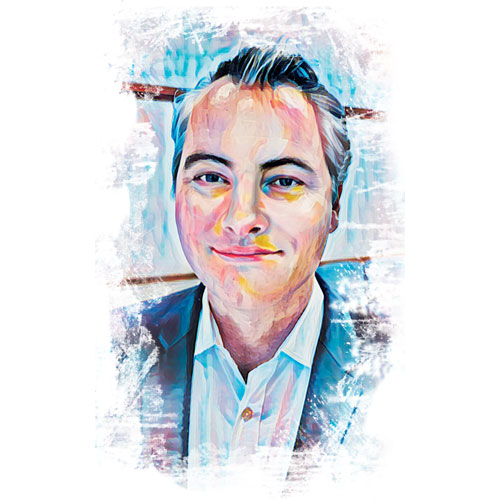
With Sensei Through His Words
by Michael O’Malley
New York
When I was 18, I felt like getting into college was going to determine the rest of my life. So when I wasn’t accepted into the school I wanted, I was gripped with anxiety.
A close family friend shared her excitement about Soka University of America (SUA), the four-year liberal arts college set to open in Aliso Viejo, California, founded by Ikeda Sensei. It wasn’t a school I seriously considered, but my mother guaranteed that if I stuck with Sensei, I would never be led astray. It was an emotional moment for me when I applied and was accepted in March 2001 as part of the first class.
What followed were many challenges. For one, my family had to make a lot of sacrifices to afford the tuition. I still had doubts about my future—no one knew about SUA as a school. Then, in my first month there, the 9/11 terrorist attacks happened. I knew I had to do my best for my family and become a person who could change the direction of this world.
When I studied abroad in China, my negativity really came out. It pushed me to chant and read Discussions on Youth by Sensei every day. As isolated as I was, reading his guidance made me feel like he was there with me.
This was a pivotal time for me. And it’s really through the support of many great people in the SGI that I awakened to the joy of striving for kosen-rufu, to what it meant to warmly care for someone and to an awareness of myself as a global citizen.
The best version of myself is as Sensei’s disciple. To this day, when I read his guidance in the SGI-USA publications, it’s like he’s sitting right beside me, giving me personal encouragement. And I know that’s because of his tremendous determination that these writings will encourage disciples for all eternity.
August 15, 2024, World Tribune, pp. 18–25
You are reading {{ meterCount }} of {{ meterMax }} free premium articles

